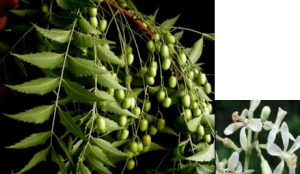We value your privacy
We use cookies to enhance your browsing experience, serve personalized ads or content, and analyze our traffic. By clicking "Accept All", you consent to our use of cookies.
We use cookies to help you navigate efficiently and perform certain functions. You will find detailed information about all cookies under each consent category below.
The cookies that are categorized as "Necessary" are stored on your browser as they are essential for enabling the basic functionalities of the site. ...
Necessary cookies are required to enable the basic features of this site, such as providing secure log-in or adjusting your consent preferences. These cookies do not store any personally identifiable data.
No cookies to display.
Functional cookies help perform certain functionalities like sharing the content of the website on social media platforms, collecting feedback, and other third-party features.
No cookies to display.
Analytical cookies are used to understand how visitors interact with the website. These cookies help provide information on metrics such as the number of visitors, bounce rate, traffic source, etc.
No cookies to display.
Performance cookies are used to understand and analyze the key performance indexes of the website which helps in delivering a better user experience for the visitors.
No cookies to display.
Advertisement cookies are used to provide visitors with customized advertisements based on the pages you visited previously and to analyze the effectiveness of the ad campaigns.
No cookies to display.
|
Division
|
Angiosperms |
|
Class
|
Dicotledons |
|
Subclass
|
Polypetalae |
|
Series |
Disciflorae |
|
Order |
Geraniales |
|
Family |
Meliaceae |
|
Genus |
Azadirachta |
|
Species |
indica |

|
Etymology:
|
Derived from Persian “Azad Dhirakat”, excellent tree or noble tree as the wood, leaves and fruits are useful. |
|
Botanical name:
|
Azadirachta indica A. Juss. |
|
Local/Trade names: |
Neem tree, Margosa |
|
Conservation status:
|
Cultivated throughout India. |
|
Digonestic features: |
Bark, twigs and leaves are bitter. |
|
Description: |
Large tree. Leaves imparipinnate, 20-40 cm long; leaflets 9-15, sub opposite, 5-8 x 3 cm, lanceolate or ovate-lanceolate, unequal-shaped, often falcate. Flowers white, axillary panicles, shorter than the leaves. Fruit a drupe upto 1 cm long, ovoid-oblong, greenish-yellow when ripe. |
|
Phenology:
|
Fls.: Mar-Apr. Frts.: July-Aug. |
|
Distribution:
|
Native of Myanmar. Cultivated throughout hotter part of India. |
|
Where to see it: |
Medicinal Plant Garden, Back Gate of Nursery, Left side Nursery, Nursery, Gate No. 2 side, Ornamental Flowering Section. |
|
Uses: |
Bark used in skin troubles. Leaves considered antiseptic, applied to boils in the form of poultice; decoction given for ulcers and eczema. Flowers tonic and stomachic. Berries purgative, emollient. Dried leaves placed in books for keeping away the moths. Odour of burning leaves kills insects. Seeds yield a non-drying oil used for skin affections. Neem Oil may be mixed with other oils and fats for the manufacture of washing soap; medicated soaps with the odour of Neem Oil are available. Nimbidin is the chief bitter principle of the oil. Neem toddy is occasionally obtained as an exudation from the upper part of some trees; used as a tonic. Timber employed for house-building purposes and for boards, panels, toys, and ploughs; termite proof. Fresh tender twigs used to clean teeth particularly in pyorrhea. |
Chief Conservator of Forests & Chief Wildlife Warden is the Head of the Department. There is one post of Conservator of Forests & two posts of Deputy Conservator of Forests viz.